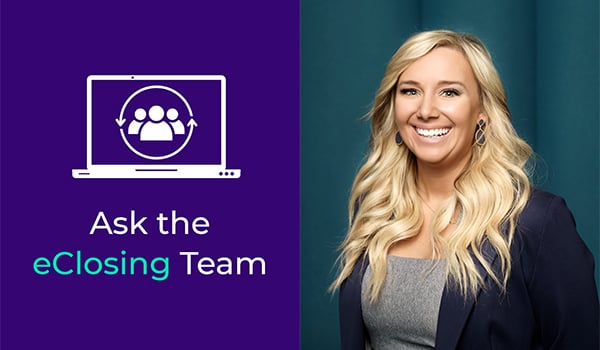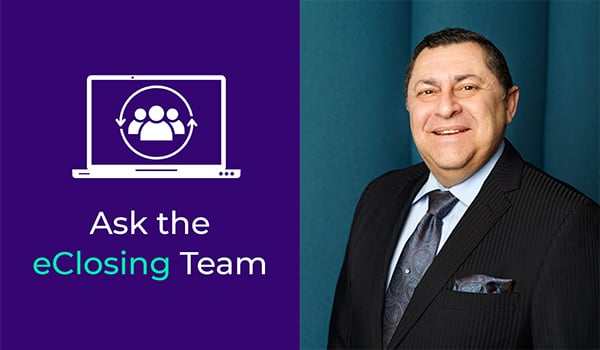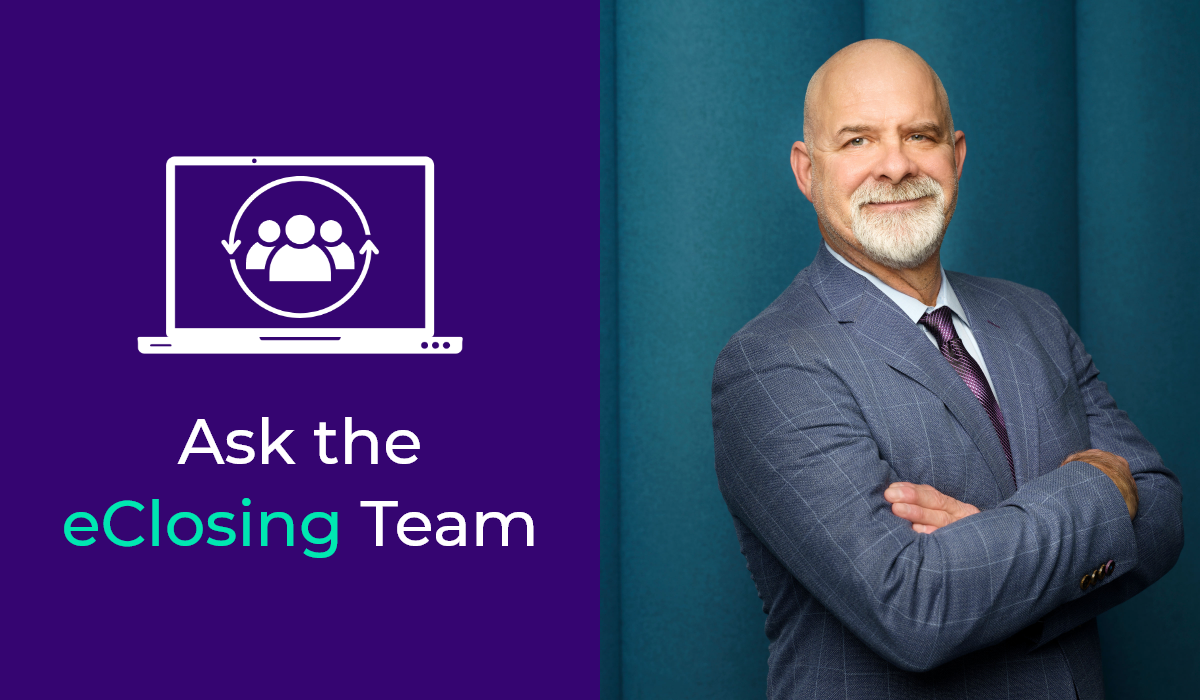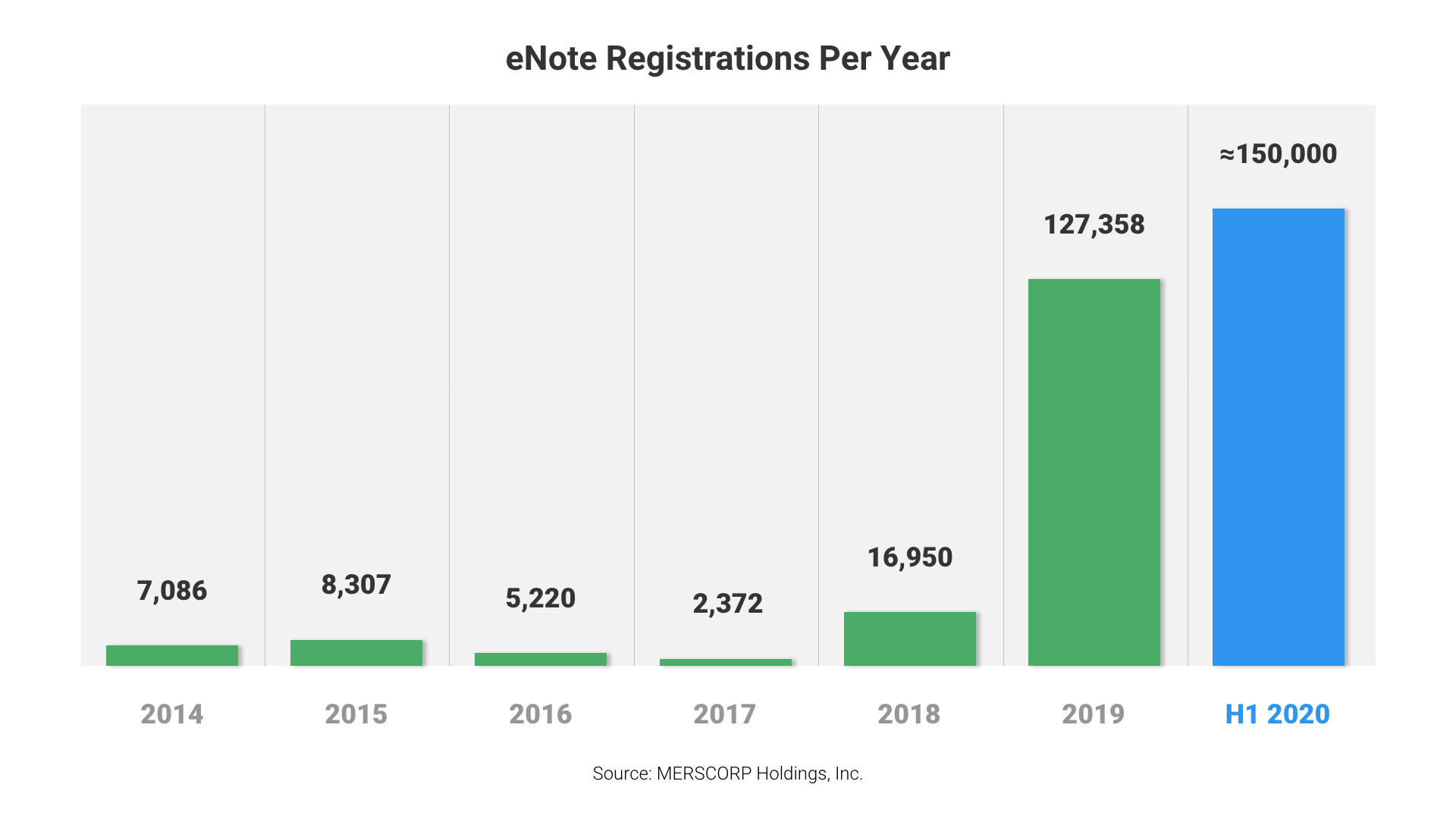Ask the eClosing Team: What components do you need for a full eClosing?
Welcome to Ask the eClosing Team, an ongoing series where DocMagic’s eClosing pros tackle real questions that we’re hearing from lenders. Today’s response is supplied by eClosing Team member Leah Sommerville.
 What components do you need to produce a full eClosing, including an eNote?
What components do you need to produce a full eClosing, including an eNote?
More and more lenders are interested in offering eNotes, which are skyrocketing in popularity due to their many benefits — especially post-closing, when it comes to selling the note instantaneously.
"The process for paper notes includes many manual steps that add time, enhance risk, and add additional shipping costs,” Sommerville said. “eNotes, by comparison, can be delivered instantly to the secondary market, reducing time to funding and including full audit capabilities.”
Ask the eClosing Team: Why are eNotes better than paper? (and other burning questions)
Many lenders, however, still want clarity about what’s needed to deliver a full eClosing process. Sommerville boils it down to four necessary components:
1. e-Enabled Docs
To reach the finish line and provide completely electronic eClosings (the nirvana of every stakeholder’s experience), lenders must first be able to provide e-enabled documents for eClosing processes such as eSignature, eNotarization, eNote generation and eDelivery. Every eClosing process requires e-enabled documents. Fortunately, all of the documents in DocMagic’s eDocument library, which has more than 300,000 documents, are available in an e-enabled format.
The eNote specifically requires the SMART Doc file format determined by MISMO, the mortgage industry’s voluntary standards setting body. (Although SMART Docs have been around for about 20 years, the 1.02 SMART Doc version is the current requirement for eNotes, even as the industry also works towards a 3.0 verifiable version.) A SMART Doc locks together its data and visual presentation in a way that can guarantee the document’s integrity. It also includes a Tamper-Evident seal that is applied to the document to maintain its integrity as copies of the eNote are transferred from one MERS Member to another.
DocMagic’s Document Generation solution has the advantage of being able to produce e-enabled documents as well as generate a SMART Doc eNote.
For lenders currently unable to generate e-enabled documents, DocMagic’s proprietary AutoPrep Solution can instantly e-enable any document package for eClosing. In those cases, DocMagic’s robust digital lending platform can also generate the Category 1.02 SMARTDoc eNote to include in the AutoPrep eClose transaction.
2. eNotary technology
More lenders are using eNotary technology, and remote online notarization (RON) in particular, to conduct eClosings. A RON platform should have some specific elements, including:
- Ability to store the RON Notary’s digital notary seal. “You want your document signature platform to have the capability to track the time and date stamp with the user’s IP address as each electronic signature is applied, but also to digitally apply a notary stamp/seal to electronically notarized documents,” Sommerville said.
- The ability to maintain video recordings for a specific period of time, based on the various states’ laws as they pertain to document retention, along with the capability to produce a full audit trail.
- Identity validation tools such as credential analysis and knowledge-based authentication (KBA).
3. eVault technology
Once the eNote has been generated, lenders need an eVault in which to store it. DocMagic’s eVault — which was built using proprietary technology that allows our eVault to seamlessly connect to our full suite of solutions — can store not just electronic documents, but also audio files of RON recordings.
Additionally, all of the lender’s partners need their own eVault if they’re going to purchase, service or maintain the eNote. The eNote’s authoritative copy (the eNote equivalent of the original paper note) can be instantly transferred from one stakeholder to the next, as well as having a copy eDelivered along the mortgage chain to the next stakeholder’s eVault.
Sommerville noted that many prominent mortgage institutions and investors already use DocMagic’s eVault, with many more slated to be in production soon.
4. MERS eRegistry connectivity
Every eNote has to be registered with the MERS eRegistry utilizing a unique Mortgage Identification Number (MIN) from MERS. The MERS eRegistry was set up to track which digital copy of the eNote is the authoritative copy and who has permissions to conduct life-of-loan edits to the eNote’s status. Although the MERS eRegistry is the system of record for eNotes, MERS does not actually store eNotes, which is why a dependable eVault is vital to any completely electronic eClosing process.
DocMagic’s close working relationship with MERS is crucial here. Lenders can sometimes find the setup process overwhelming and may lose momentum for their eNote efforts if any roadblocks pop up.
"DocMagic's eClose Team works closely with lenders to guide them not only through the necessary technology adoption, but also through MERS eRegistry setup (as required for eNotes),” she said. “We also work through successful adoption for the lender's business partners to ensure the best experience possible for all stakeholders."
A single-source solution
DocMagic’s Total eClose solution — which facilitates both hybrid closings and full eClosings — is one of the few eClosing platforms that can provide all four of these components. Most tech vendors in the mortgage space only provide one of two of these components, forcing a lender to contract with multiple lenders to produce an eNote.
The eClosing Team can be reached at eClosingTeam@docmagic.com.
Related Content:

 Why are eNotes better than paper notes?
Why are eNotes better than paper notes?
